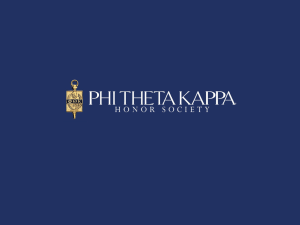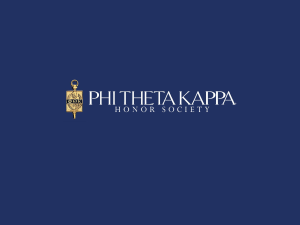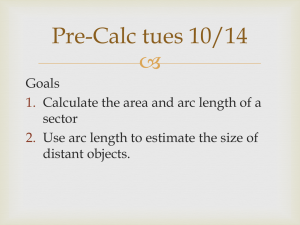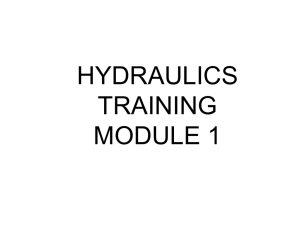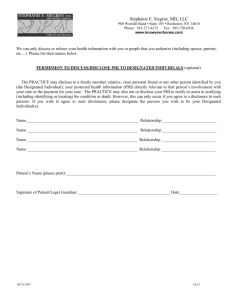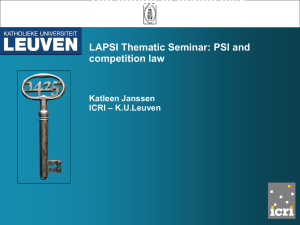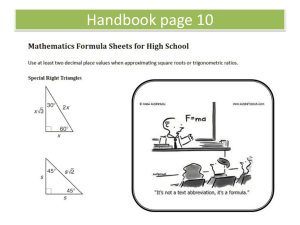An Extension of Morley`s Theorem
advertisement
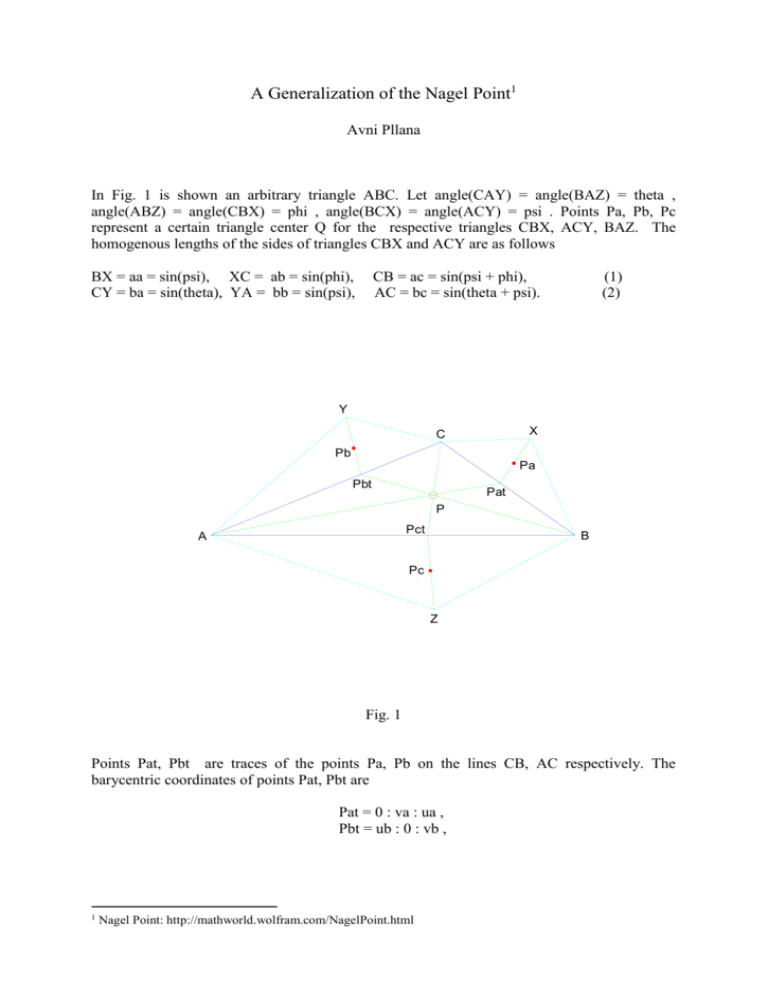
A Generalization of the Nagel Point1 Avni Pllana In Fig. 1 is shown an arbitrary triangle ABC. Let angle(CAY) = angle(BAZ) = theta , angle(ABZ) = angle(CBX) = phi , angle(BCX) = angle(ACY) = psi . Points Pa, Pb, Pc represent a certain triangle center Q for the respective triangles CBX, ACY, BAZ. The homogenous lengths of the sides of triangles CBX and ACY are as follows BX = aa = sin(psi), XC = ab = sin(phi), CY = ba = sin(theta), YA = bb = sin(psi), CB = ac = sin(psi + phi), AC = bc = sin(theta + psi). (1) (2) Y X C Pb Pa Pbt Pat P Pct A B Pc Z Fig. 1 Points Pat, Pbt are traces of the points Pa, Pb on the lines CB, AC respectively. The barycentric coordinates of points Pat, Pbt are Pat = 0 : va : ua , Pbt = ub : 0 : vb , 1 Nagel Point: http://mathworld.wolfram.com/NagelPoint.html where ua, va, ub, vb are obtained from the barycentric coordinates of a certain triangle center Q = (u : v : w), by substituting expressions (1), (2) for the side lengths of the respective triangles CBX, ACY. Now lines APat, BPbt, CPct are concurrent at the point P, with barycentric coordinates P = ua*ub : va*vb : ua*vb . (3) The Nagel point X(8) we obtain from (3) for the special case Q = X(4), that means the orthocenter, and theta = (pi – alf)/2, phi = (pi – bet)/2, psi = (pi –gam)/2 , where alf, bet, gam are the angles at the respective vertices A, B, C of the triangle ABC. The Gergonne point X(7), is obtained for Q = X(4), theta = -alf/2, phi = -bet/2, psi = -gam /2. The Yff center of congruence X(174), ), is obtained for Q = X(1), that means the incenter, and theta = -alf/2, phi = -bet/2, psi = -gam /2. An interesting result is, that for Q = forward Brocard point2 ( Brf = 1/c^2 : 1/a^2 : 1/b^2), the lines APat, BPbt, CPct are concurrent at a point Pbf, only for theta = (pi – alf)/2, phi = (pi – bet)/2, psi = (pi –gam)/2. The barycentric coordinates of Pbf are Pbf = 1/(cos(bet/2))^2 : 1/(cos(gam/2))^2 : 1/(cos(alf/2))^2 . (4) The same holds for Q = backward Brocard point ( Brb = 1/b^2 : 1/c^2 : 1/a^2). The barycentric coordinates of the intersection point Pbb of the lines APat, BPbt, CPct, are Pbb = 1/(cos(gam/2))^2 : 1/(cos(alf/2))^2 : 1/(cos(bet/2))^2 . (5) In Fig. 2 is shown a generalization of the Mittenpunkt X(9). Points Ia, Ib, Ic are the excenters of the arbitrary triangle ABC. Let angle(CAY) = angle(BAZ) = theta , angle(ABZ) = angle(CBX) = phi , angle(BCX) = angle(ACY) = psi . Then lines IaX, IbY, IcZ are concurrent at a point P with barycentric coordinates P = h(a,b,c,theta,phi,psi) : h(b,c,a,phi,psi,theta) : h(c,a,b,psi,theta,phi), where h(a,b,c,theta,phi,psi) = a*(2*s*(s-b)*(s-c)-a*b*c+area(ABC)*(b/tan(phi)+c/tan(psi)-a/tan(theta))) , (6) where s = (a+b+c)/2 . The Mittenpunkt X(9) we obtain from (6) as a limit case when theta = phi = psi = delta and delta tends to zero, X(9) = a*(b+c-a) : b*(c+a-b) : c*(a+b-c) . 2 Brocard Points: http://mathworld.wolfram.com/BrocardPoints.html (7) Ib C Ia Y X P A B Z Ic Fig. 2 In Fig. 3 is shown the Conway circle3 for the arbitrary triangle ABC. The Conway circle is centered at the incenter I and has radius Rc = sqrt( r^2 + s^2 ), where r is the radius of the incircle and s is the semiperimeter of the triangle ABC. Bn Ca An c Cb P c C Ac a Ab a I b Bc B A b Ba Cn Fig. 3 3 Conway Circle: http://mathworld.wolfram.com/ConwayCircle.html The rays emanating from I and perpendicular to the sides BC, CA, AB, intersect the Conway circle at points An, Bn, Cn respectively. Now lines AAn, BBn, CCn are concurrent at a point P with barycentric coordinates f(a,b,c) : f(b,c,a) : f(c,a,b) , where f(a,b,c) = tan(alf) / ( Rp – r + (s-a)*tan(alf) ) , (8) where alf is the angle at the vertex A of the triangle ABC, and Rp = Rc. The theorem also holds for any radius Rp > 0 . For Rp = r we obtain the Gergonne point X(7). Triangle AnBnCn represents an extension of the Gergonne triangle.
